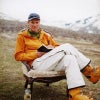The Soul of Skiing in the Great White North
Tired of epic lift lines, hostile locals, and $15 burgers at the lodge? Something wonderful is happening in a remote pocket of British Columbia, where homegrown spirit is flourishing beyond the reach of corporate resorts and there's plenty of powder to share.
New perk: Easily find new routes and hidden gems, upcoming running events, and more near you. Your weekly Local Running Newsletter has everything you need to lace up! .
Winter in Northern British Columbia is long and it is also deep, and the distances up here vast, and if you want to see any real bit of this country, you spend a lot of time staring through the windshield of a speeding automobile while you contemplate life and violent death and also road sand. The highway department sprays the few paved roads liberally with this orangey grit, a fact for which you are grateful, because only that and a restraining touch on the brakes are what’s keeping you and four patches of rental-tire rubber from careening into the frozen wilderness. Your relationship with the sand is complicated, however. This is no toes-in-the-Bahamian-surf stuff, but sand that’s of a piece with northern B.C.—bigger, less refined. When a logging truck comes around a mountain curve firing a spray of buckshot that bites at the windshield of your Kia Rio, it has a curious effect that veers from its original purpose: you white-knuckle it and steer for the guardrail.
Frequently, as you speed down the Yellowhead Highway, an ellipsis in the road ahead will resolve into a flock of small red birds—redpolls—that peck insistently at this gravel. Evolution hasn’t worked swiftly enough for them to avoid the perils of internal combustion: they take more interest in gobbling the grit to help digest winter’s seeds than in heeding a barreling SUV. You soon find you can gauge the north’s yawning distances not in kilometers, or in hours, or, as Wyomingites once did, in the number of beers consumed, but by the count of redpolls wedged in the front grille upon arrival—constellations of red tennis balls, their little yellow beaks still open, ravenous till the end. This is all to say, if you’re ever headed far up in the Great White North, get the supplemental insurance.
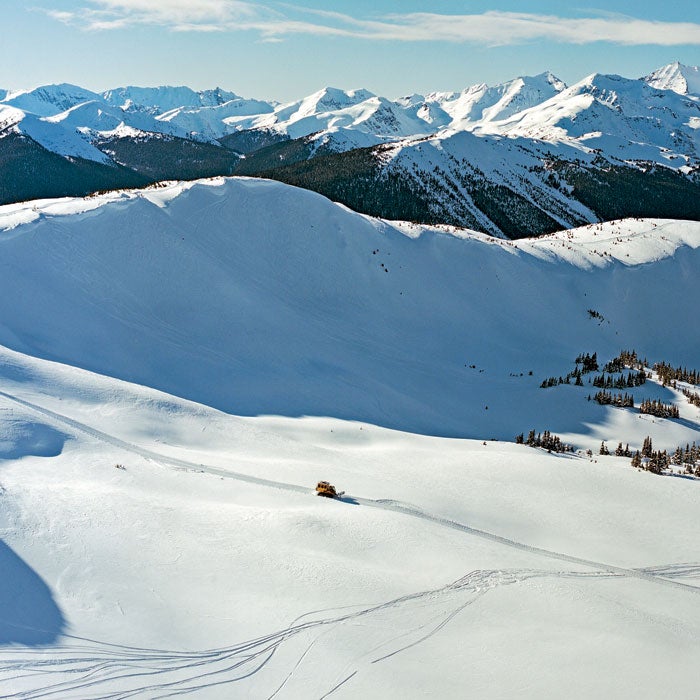
The metaphysics of road grime were not, strictly speaking, what impelled me to look north last winter. After two decades of visits, I thought I knew the trail map of B.C. in winter: Whistler! Revelstoke! Birthplace of heli-skiing! But British Columbia is huge and mostly vacant. In a province that’s as large as Washington, Oregon, and California combined, three in four residents live close enough to the U.S. border to visit our outlet malls and still be home in time for Hockey Night in Canada. Some 6 percent of B.C.’s population is sprinkled across its upper half, a France-size spraddle of wilderness and two-lane roads. I’d heard rumors that north of the A-list resorts—way north—lies a skiing terra incognita where residents charge as hard as any peacocking bro at Jackson Hole or Crested Butte. I’d heard, too, of homegrown skiing projects and a winter culture so vibrant that people from other great mountain towns are moving up there in pursuit of the ski-bum trifecta: low rent, high snowfall, and a laid-back vibe.
This last bit intrigued most of all. I’m drawn to the places where skiing blossoms in the unlikeliest snowbanks—the random spots that the trampling herd doesn’t book for Presidents’ Day weekend. Most ski resorts today do not agree with me. They are plasticky, beige, interchangeable. Corporate. When you’re there, a hand is always in your pocket. Last winter, as I made calls to northern B.C., two of skiing’s gorillas, Vail Resorts and Powdr Corp., were bloodying each other over who would control the dirt beneath Utah’s Park City Mountain Resort, with the people and economy of Park City held hostage. Reading about such things, I find myself longing for what I’ve never really known: Aspen before the Learjets. Jackson Hole before Texas oil money. I miss 1970s Tahoe, a place I never was, when you could get a Ph.D. and still choose a career as a ski bum and survive.
The more I heard about northern B.C., the more it seemed that something hopeful was taking shape in its big, snowy, king-cab-pickup-populated mountains. Passport was dug from drawer and skis from shed. I headed across the 49th parallel unsure exactly what I would find and oblivious to avian casualty.
Smithers, B.C., sits between the Babine and Howson Ranges, halfway up the province. I arrived after traveling past a full Switzerland of peaks, only to realize that another Switzerland of mountains lay between here and the Yukon territory. Smithers was one corner in a triangle I’d begun to think of as the north’s powder vortex. People said it was the best town in upper B.C.—a Nelson/Canmore/Fernie of the North populated by so-called Smithereens, a mix of gray-ponytailed draft dodgers, Swiss immigrants, proud-but-poor First Nations peoples, back-to-the-landers, crystal clutchers, crusty loggers, crustier miners, and, increasingly, young mountain-town refugees from the south. Somehow they all get along. “A difference of opinion surrounded by mountains,” said 36-year-old Taylor Bachrach, Smithers’s mayor and part of this younger generation.
Unlike small towns elsewhere, outdoorsy Smithers is thriving in the cold mountain air. The six-block Main Street is vaguely Swiss in the way Swiss Miss cocoa is vaguely Swiss, anchored at one end by a statue of Alpine Al, who blows eternally on his alpenhorn from a median strip. Though the town has 5,500 residents, it supports nine sporting-goods stores. Oscar’s Source for �����ԹϺ��� shares a peaked alpine roofline with Dan’s Source for Sports, which sits kitty-corner from McBike and Sport. Hudson Bay Mountain, the mellow local ski area, leans over downtown like a wave perpetually poised to crash across the place.
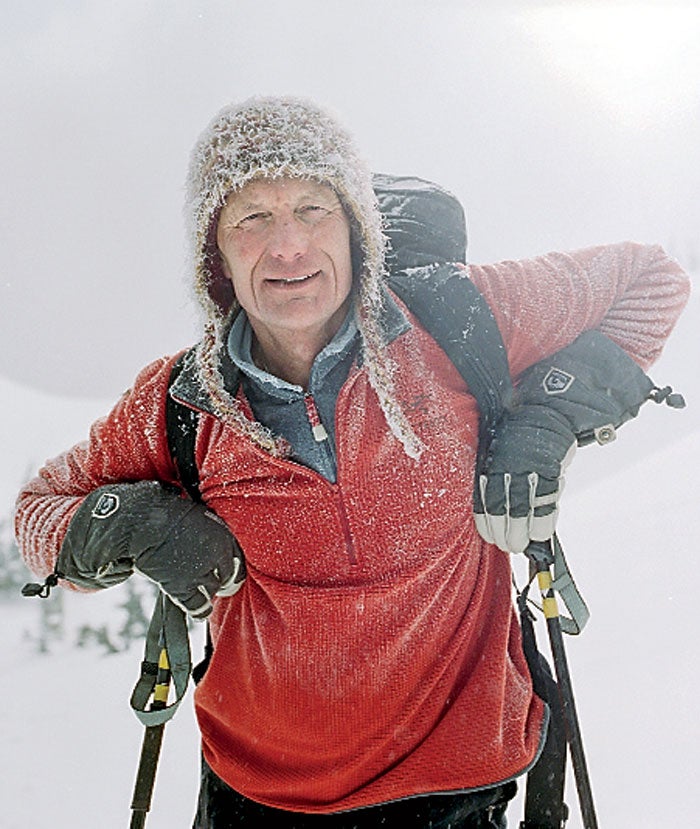
I’d come to see another ski area, though. The next morning, I climbed into the king cab of local innkeeper Brian Hall to visit what he and others had built: North America’s first “resort” made exclu-sively for backcountry skiing. Hall is 64 and a greyhound, tall and lean, with a Founding Fathers forehead and a soft and measured (that is, Canadian) manner. Deep parentheses bracket a sly smile on his sober face. He loves to ski. Wedged in the back of the truck were his laughing, hard-skiing, weekday off-piste crew.
Everyone up here has an arrival story, and as we drove northwest into a snowstorm Hall told me his: He’d been doing avalanche control in the Canadian Rockies in the mid-eighties. One day someone on a chairlift told him that most people hate what they do for a living. He never forgot that. Later he agreed to house-sit for a friend in Smithers. Liked the place. Decided to figure out a way to be here. He has now lived in Smithers for more than 25 years, most recently as the owner of the Stork Nest Inn (simple, clean, full breakfast). “It’s a real mountain town,” he said as he drove. You take a left at Hope—after the Trans-Canada Highway breaks free of the Vancouver megalopolis and arrows toward the North Pole—and you sense something lift. “The air feels different almost,” he said. His voice drifted off for a moment. People here like to say they’re all beyond Hope.
Hall explained how his brainchild, the Hankin-Evelyn Backcountry Recreation Area, was an invention born of necessity. “There was backcountry skiing here, but it wasn’t that easy,” he said. The region’s spruce forests are often too thick to ski. The high alpine, meanwhile, can be hard to access, is avalanche prone, and can harbor fierce weather.
But, Hall wondered, what about a ski area built expressly for backcountry skiers? What if somebody cut some ski runs for people of different skill levels and added a warming hut—all set apart from any conflict with snowmobilers? There’d be no lifts, no tickets to buy. No ski patrol or avalanche control. No lodge hawking $5 lip balm. Just a spot in the mountains for all types of skiers. “I wanted it to be a place where everyone would feel welcome.”
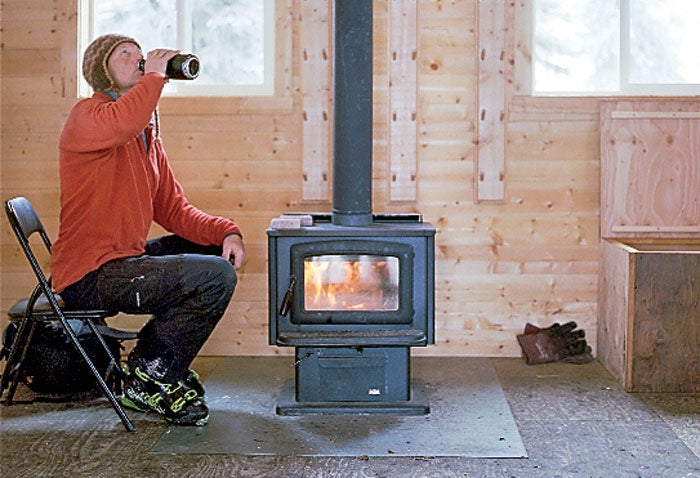
The idea marinated for years. Then Hall and others got wind of provincial and federal grants to put displaced loggers back to work. They found more than 9,300 acres to use as a nonmotorized zone and received more than $600,000 to chainsaw a few pistes from the dense forest, build a simple warming hut, and improve access roads. Their ski area without a ski lift opened six years ago.
We drove 25 miles out of town to where a one-lane logging road ended at a plowed clearing in the woods. A ridge reclined against the horizon. “I hate it when it’s crowded,” Hall said as we got out. There was one other car.
The Aspen sidecountry this wasn’t. Our first track was an old logging skid road. Chatting with Christian Lehoux, a former ski instructor and carpenter from Fernie who moved here a few years ago, I looked down and noticed that Lehoux wore a foldable saw on his left hip (“for brush”) and a can of bear mace on his right (“for the moose”). Then we rounded a corner. White stripes twisted through dark timber on the mountainside above, some of the 13 ski runs cut to date. It looked like a gone-to-seed Mad River Glen.
With Hall leading, we toured up cleverly named Run 7, a beginner slope. It was narrower than a city street, purposefully cut at half the width of a normal ski run to keep the woodsy feel of a backcountry powder stash. Occasionally, a trail marker appeared to gently keep us on the right track. We reached a wooded ridge and stood beside a sign pointing to Run 8A. Shards of emerging sunlight hung in the trees. Hall waved his ski pole across a half-dozen cut runs that spilled below us. To our left, the bald whaleback of Hut Ridge reared up another thousand feet or more, its flanks home to several steep powder bowls, its ridgeline extending about an hour’s climb and ski to a refurbished fire lookout that skiers can rent for five bucks a night per person. In all, Hankin-Evelyn offers 2,500 vertical feet of skiing back to the car and five alpine bowls, accessible from three different trailheads. When I finally stopped daydreaming of future skiing and looked around, everyone had already dropped in, leaving me only Hall’s yodel to follow.
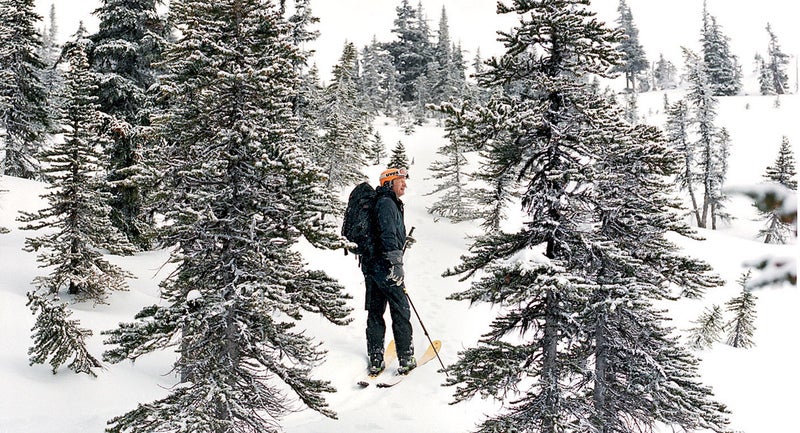
After a bouncy, 1,000-foot run through the cut-open forest, we put our climbing skins back on and ascended again, this time following a sign to the Hankin Hut warming cabin that Hall and others had built among the treeline firs.
“It wasn’t just about me making a ski run,” Hall explained as we warmed up, huddled beside the wood-burning stove, and ate lunch. Building Hankin-Evelyn was about bringing people together in the mountains. “It’s about building community,” he said. And it worked: the ski area saw 4,000 visits the previous winter. It has become a part of -Smithers and a draw. But good things like this don’t just magically appear in the out-of-the-way north. Up here you’ll grow gray waiting for government promises. No, you get your pals together. You make good happen.
A few days later, I headed down the Yellowhead Highway, dodging bow waves of road sand from logging trucks, until outside the village of New Hazelton I spied a board jammed in a snowbank. SKEENA CAT SKI, it read in Day-Glo spray paint. The turn-off led down a snow-covered road and over a one-lane bridge to a welding shed that had been converted to a simple, cozy, five-room lodge. Or mostly converted: half the building was still a shed. ENTRANCE was spelled out in big brush strokes on one end of the building.
Inside, behind the bar, I met Jevon Zyp, who co-owns Skeena Cat Skiing with his mother, Lynn Schwartz. Zyp is a self-described redneck from southern B.C. with a quick wit, a quicker laugh, and, at 34, a hairline in such complete cross-the-scalp retreat that he looked like a Manchu. Within ten minutes of our meeting, he told me a joke too off-color to print here. I liked him immediately.
That night across the dinner table, Zyp recounted how he’d been a snowboarder who started working at snowcat operations at 18—constructing lodges and building access roads. He seemed to specialize in rough and dirty jobs. He’d been a ranch hand, driven heavy equipment, and even invested in a fledgling mining-exploration company. “Lost my two front teeth in Saskatchewan over it,” he said. He showed a grin whose shine didn’t match the rest of him.
Mining accident?
“Oh no! Got a boot in the face!”
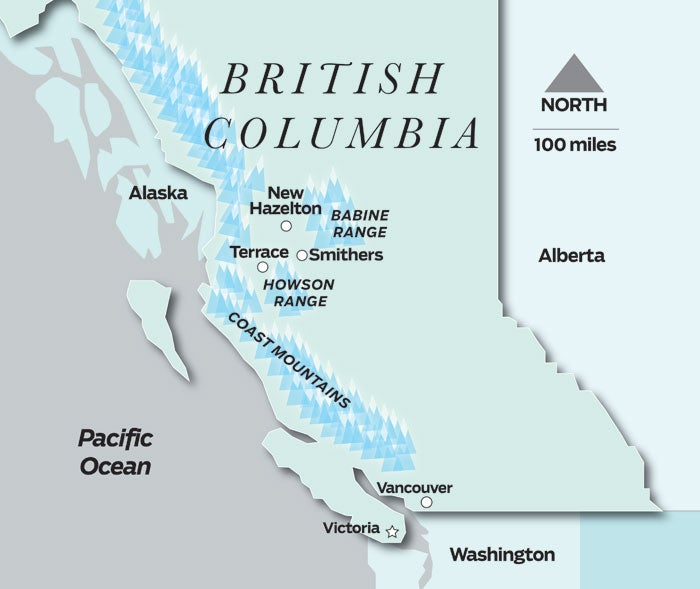
Zyp had long wanted to open a cat-ski business but couldn't find the right spot. A friend suggested he “look north, into the unknown.” Finally, Schwartz—who’d worked at snowcat outfits herself—nudged him onward and volunteered to help. Skeena Cat Skiing opened in the far northern end of the Babine Range four winters ago. Mother and son were laboring hard on little sleep to make the dream work. Schwartz cooks and keeps the books. Zyp is the snowcat driver, chief mechanic, night plow driver, carpenter, man Friday. (He and some friends built the lodge themselves.) It was challenging to get a strong repeat clientele established way up here, they told me. “What I find in the north is that if you have the will, there’s a way,” Zyp said. “But you’ve got to do it yourself. No one’s going to hand it to you. Everything’s a little tougher.”
The next morning, ten clients piled into pickups, kicking aside empty beer cans. One guest’s door had no handle. “That’s the child lock,” said tail guide Jason Burns. The snowcat was staged miles away, deep in the mountains; the road was a luge run—snow covered, one lane. Zyp gunned his rig at 40 miles per hour, exhausted but lively. �����ԹϺ��� the windows, the mountains grew chesty. So did the snowbanks, until they crested the windows. “Don’t worry,” he said. “We couldn’t slide off the road if we wanted to.”
Finally, a yellow snowcat appeared in a clearing among the balsams. We spilled out. Weeks of sun and cold followed by a big dump meant we’d be riding atop a snowpack as twitchy as anyone could remember, and we practiced finding each other with our avalanche beacons. These lonesome mountains don’t forgive. Any mistake and things would go sideways fast.
That’s when I looked over and saw Zyp. He was dressed in his usual uniform—filthy dungarees, a Burton soft shell that looked like it had mopped up the Deepwater Horizon oil spill. A big diesel tank sat in the bed of his pickup. Zyp held the nozzle, fueling up the snowcat with a lit Canadian Classic cigarette Bogarting from his lower lip.
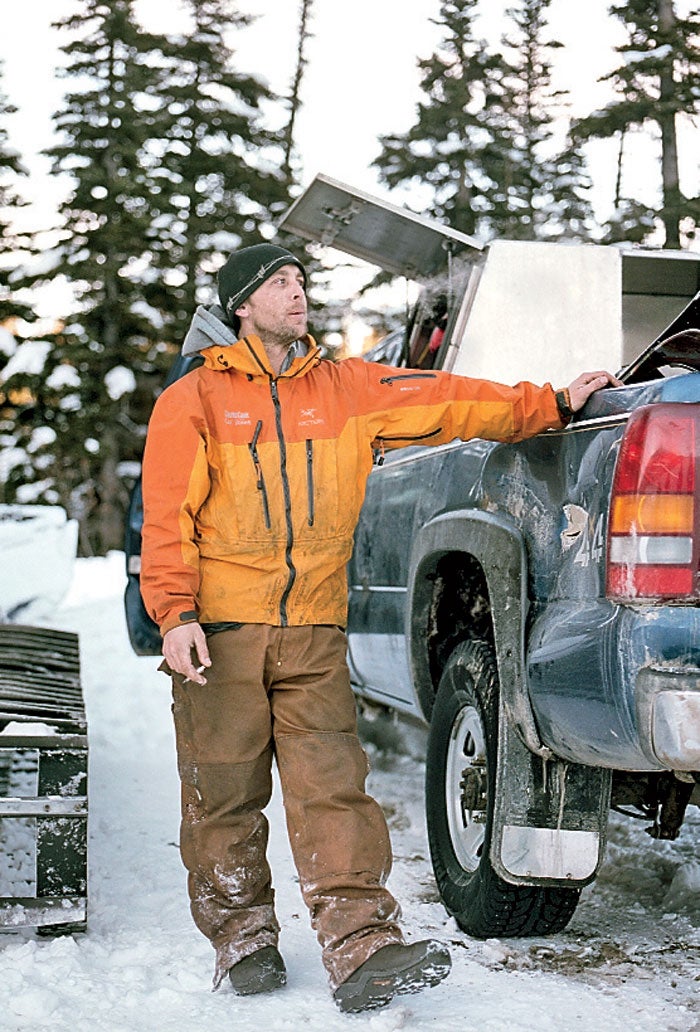
The cat trundled through the woods until we climbed into blue sky. Around us the Babines showed their wolfish teeth. Avalanches had pulled out everywhere. Thomas Exner, our bearded, long-haired Bavarian guide, who holds a Ph.D. from the University of Calgary, home to perhaps the world’s best snow-science program, explained that he couldn’t put us on the steeper, juicier lines. I settled in for a dull day of turns on beginner slopes and being barked at by a grim, Teutonic martinet.
Maybe Exner’s snow savvy was the difference. Maybe the cowboy attitude of the north had simply rubbed off on him. Whatever the reason, Exner was the most laid-back guide I’d ever met. He steered us to Black Bush, a short, powder-stuffed face flecked with small anchoring pines, made an initial turn or two to check stability, then told us to go for it. In my 15 years of cat and heli-skiing, no guide had ever told me to ski before him. One at a time we dove in. It was calf-deep blower, top to bottom. Our verdict hooted through the trees.
“I know sex is hard to beat, but—damn!” Craig from Vancouver said at the bottom.
“It’s gotta be pretty good sex,” replied Joe from Bend, Oregon. So Exner let us repeat it.
After that, the snowcat trundled back to the mountaintop.
“Where we goin’, Thomas?”
“SFD,” the accent replied.
“…?”
The Bavarian grinned through his beard. “Straight fucking down.” And the guide was gone in a magician’s puff of white. Having given us the privilege once, he wasn’t about to let ten people poach his freshies again.
Twenty years ago, Canadian-born Brad Zeerip was a fishing guide living in Michigan. He spent his summers getting tourists into steelhead and his winters skiing, taking long, arcing road trips through Colorado and north into British Columbia. He recalled to me how one afternoon, over après beers at Whistler Blackcomb, “this girl came in and said, ‘Only wimps ski at Whistler. Real men ski at Shames Mountain.’ Instead of blowing her off, we said, ‘Where the heck is Shames?’ ”
Zeerip headed up to the question mark of the northern Coast Range. He fell in love with what he found—the unpeopled mountains, the Whistler-topping snowfall. The fisherman saw the Skeena River, home to some of the world’s largest salmon and steelhead, where locals will toss back a 15-pound salmon but keep the 40-pounders; they call them smileys. “I went home and told my sweetheart, Kim—we were just dating then—that I’d found the place that we were gonna spend the rest of our lives,” said Zeerip. “She looked at me like I was from Mars.”
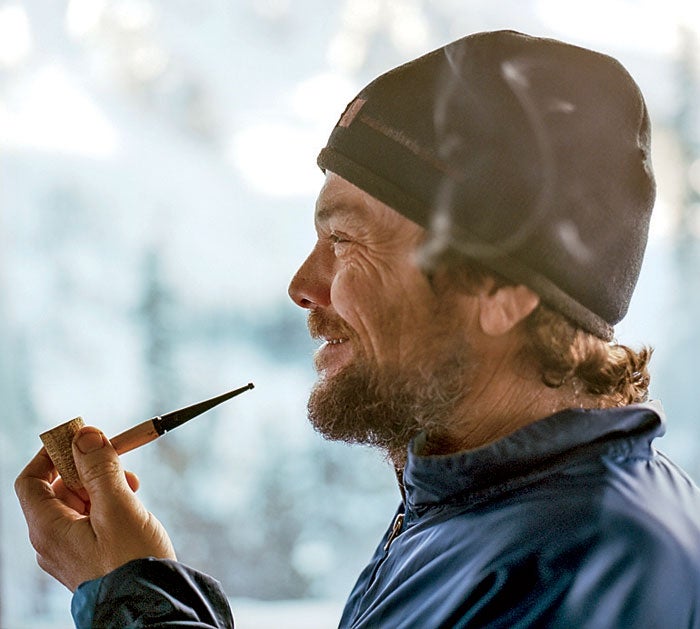
In 2001, the couple moved to the town of Terrace, which sits twenty-odd miles downhill from Shames in the wide lap of the first wet Coast Range peaks, 130 miles west of sunny, drier Smithers. Terrace is a town built by loggers—the former cedar-telephone-pole capital of the world!—an unbeautiful burg in a beautiful setting. But then you don’t drive 17 hours from Vancouver for Shakespeare in the Park. The Zeerips opened a fishing guide service out of their seven-bedroom bed-and-breakfast, Skeena River House, on the banks of the river. When I’d asked who would be a good guide to Shames—a rowdy little hill said to have the best and most lift-accessed backcountry skiing in North America—people naturally pointed me to Zeerip. In Canuck argot, if you’re passionate you’re a keener, and up here Zeerip was keener in chief. “This is paradise on earth,” he told me more than once. “I don’t even like to leave for vacation or to go see my family. This is where they’re going to bury me.”
When I arrived at the inn, there was a spey rod by the front door and a yellow-haired Swede by the woodstove. Swedes—those shock troops of great skiing worldwide. It was a good sign. The next morning we piled into Zeerip’s truck, driving along the misty Skeena as the day cracked open. Zeerip drove in his ski boots. His beard was lathered with so much zinc oxide that he looked like a man who really likes cake. Out of town, we turned right and the snowy road lifted us into a little Himalaya: Glaciers. Bandsaw ridgelines. Two-thousand-foot chutes. “That’s called the Valley of Certain Doom,” Kim said, pointing to a steep-walled canyon off to the side. Smithers had been pretty. This was spectacular.
Shames sat high on a mountainside at the end of the dead-end road. There was a parking lot. A tired lodge that sold $35 ski lessons and poutine with a side of old-ski-boot fug, no charge. A single wood-slat chairlift, and above that a T-bar. In all, three lifts served 29 trails. Location was everything, though. Shames got pasted with Utah-quantity snows, so every Friday at the Friday-to-Monday ski hill was a powder day. Today was Friday. We queued up in the (rare) lift line.
“Hey, Phil!”
“Hi, Steve!”
“B������!”
“Mornin’, Ray!”
Shames may be the only place where there are friends on a powder day.
This scene almost didn’t happen. Shames Mountain first opened in 1991. It never once made money. About ten years ago the owners decided to sell, eventually announcing that they would have to shut down if they couldn’t find a buyer. Determined to keep Shames running, a group of citizen-skiers stepped up with the idea of creating North America’s first nonprofit community service co-op ski area—in which any profits get plowed back into operations. Facing a final deadline, the co-op raised $360,000 in just three months, mostly in the form of $299 memberships purchased by residents of Terrace and nearby Prince Rupert and Kitimat, who bought a vote and a hope to keep their hill alive. The provincial government chipped in by forgiving one outstanding loan and giving a favorable long-term payment schedule on another. In late 2011, My Mountain Co-op operated Shames for the first time. Today it has 1,200 paying members.
“Shames Mountain has been in the black ever since the co-op took the reins,” said Meredith Skimson, the chair of the co-op’s board of directors. They’ve reduced the skiing to four days a week from five, focused on family activities, and kept prices affordable. Even with one less day, skier visits have remained the same.
Back at the hill, a cheer went up as the bullwheel started turning. The runs weren’t long, just 1,600 feet from the top of the lift and covering a tiny 250 acres, but they rolled like a coaster and the snow was deep. We bombed down open slopes and through silent old growth where I tried not to floss with the bark of big timber. Zeerip and his crew were strong and fast and left me heaving every time.
We skied until lunch and the lift broke down, then everybody headed into the lodge for Lucky Lagers and Sneaky Petes—tall tumblers of rye, Kahlúa, and milk. Over onion rings, Skimson explained how Shames has only one year-round employee and volunteers largely keep it going. Volunteers painted the lodge. Volunteers installed the lift’s haul rope. Volunteers constructed the generator building out back. It’s been the kind of community-wide effort where if somebody shows up to pay the tab at the paint store, the owner winks and says, “What tab?” Later I noticed Skimson behind the bar, washing Sneaky Pete glasses.
The next morning we headed up to the mountain again, this time with Zeerip and another local, Polly Rudderham, to see how most folks use Shames: as a stepladder to the backcountry. Shames’s tiny ski hill is misleading. The area’s permit spans some 7,300 acres (a swatch of mountains larger than Vail), an as-yet-undeveloped zone that’s easily accessed using a bump from the chairlift, some climbing skins, and a modest set of lungs. We traversed to the side of the resort. Zeerip rattled off the names of choice tree lines and gullies before us, just a half-hour of work away: No Dogs. No Socks. Iron Curtain. I couldn’t keep up.
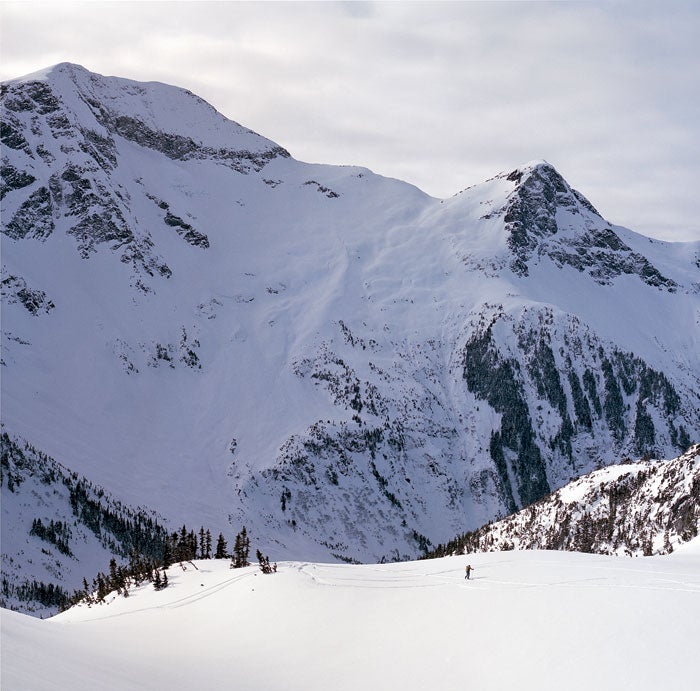
“Is this the heart of the Shames backcountry?” I asked.
He gave me a blank look. “Well, it’s the easiest to access,” he replied. Big alpine bowls lined up into the distance like soup ladles laid beside one another. He pointed out Thunder Bowl, and Super Bowl beyond that. Zeerip said he rarely crosses a track all winter. “I’ve been exploring here for a decade, and there’s a lifetime left.”
We dove in, and it was good.
During a few days in Terrace, I would meet at least a half-dozen newcomers—young teachers, nursing students—who moved here for this mountain, and these mountains, just as I met young people moving to Smithers, too. When they spoke, I heard the thing I’d been looking for—an open-armed inclusiveness that is such an endangered species in mountain towns elsewhere. Up here there’s no threat in sharing that secret stash, no downside to offering up a smile to that keener huffing up the ridgeline behind you. In the Big North, you can still afford to be friendly. The happiness runs deep. And it keeps coming down.
Christopher Solomon () is an �����ԹϺ��� contributing editor. His work appears in Best American Sports Writing 2014.


